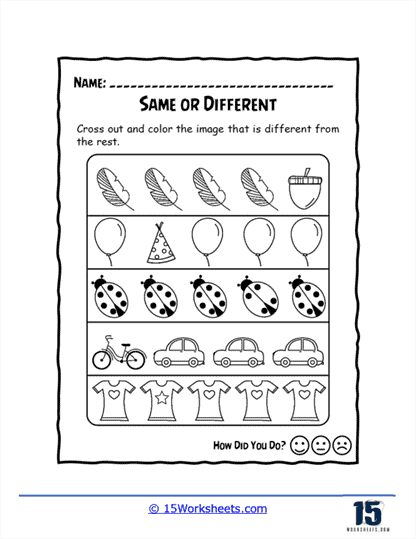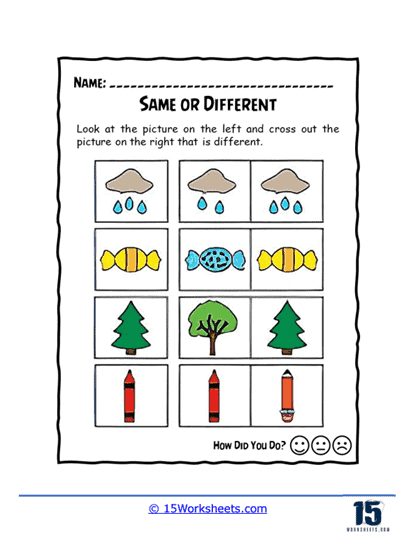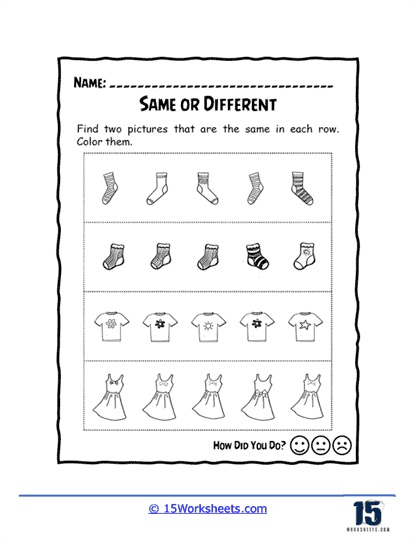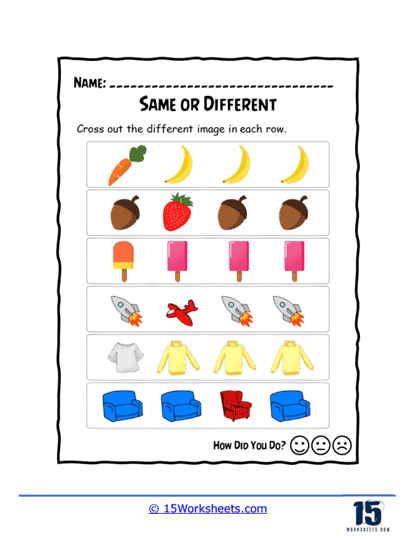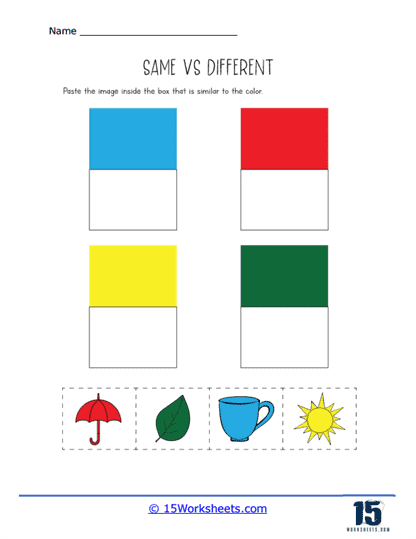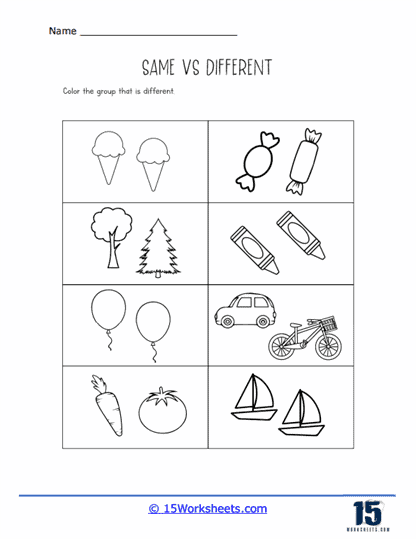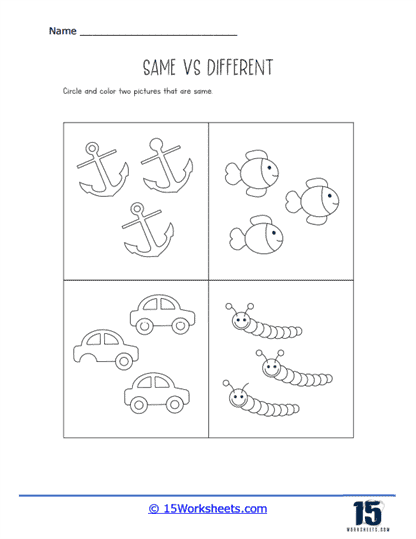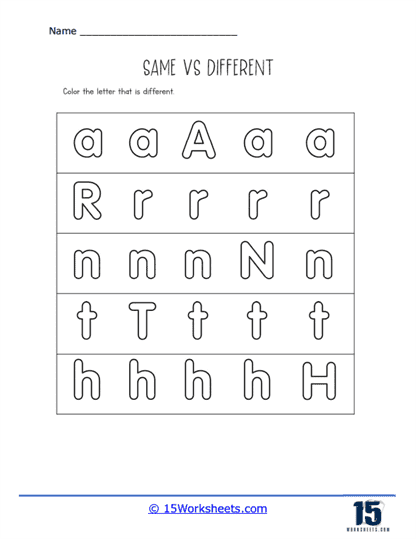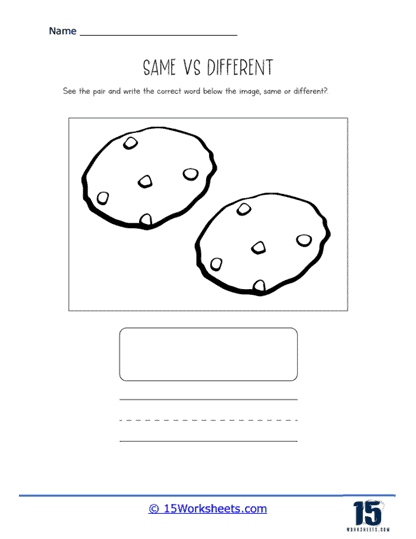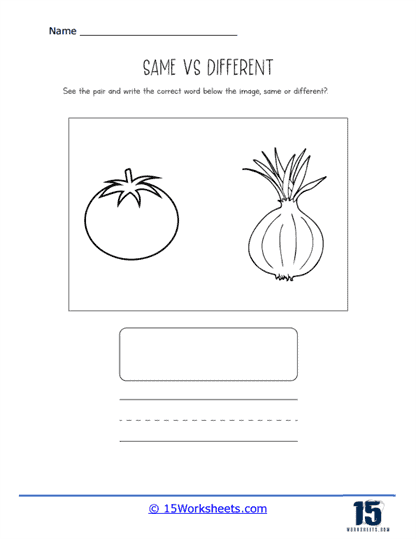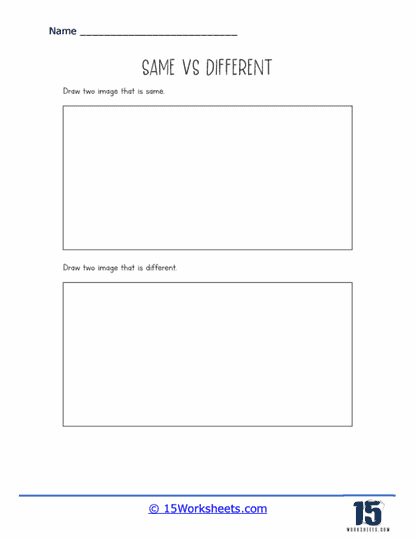Same vs. Different Worksheets
What are Same vs. Different Worksheets?
These worksheets focus on understanding of comparison concepts and improve their ability to recognize similarities and differences. They feature a variety of activities and exercises that ask children to identify and compare objects based on their features.
Same vs. different worksheets can come in many different forms, such as fill-in-the-blank exercises, matching games, and puzzles. Some worksheets might ask children to identify objects that are the same or different, while others might ask them to identify similarities and differences in pictures or images. Many same vs. different worksheets also include visuals and illustrations to make the learning process more engaging and enjoyable for young children.
When we say things are the “same,” it means they look, feel, or are identical. For example, if you have two apples that look exactly alike, we can say they are the same. Or if you have two identical socks, they are the same because they match perfectly.
On the other hand, when we say things are “different,” it means they have some kind of distinction or dissimilarity between them. For example, if you have two different kinds of fruits, like an apple and a banana, they are different because they look and taste different from each other. Or if you have two different-colored socks, they are different because they don’t match exactly.
The concept of same and different helps us understand and classify things based on their similarities or differences. It’s a way for us to describe and compare objects, shapes, colors, sizes, and even ideas. It’s a fundamental concept that helps us make sense of the world around us!
Teaching the math concept of same vs. different can be done using various methods. Here are some strategies you can use:
Real Objects – Use real objects of different shapes, sizes, and colors, and ask children to identify objects that are the same or different. Encourage them to use words like “same,” “different,” “similar,” and “not alike.”
Visual Aids – Use pictures or illustrations that show examples of objects that are the same or different. This helps children understand the concept of comparison and pattern recognition.
Sorting Activities – Provide children with a variety of objects and ask them to sort them into groups based on whether they are the same or different. This activity helps them understand the concept of classification and grouping.
Memory Games – Play memory games with children that require them to identify objects that are the same or different. This game helps them develop their observation and memory skills.
Worksheets – Use our same vs. different worksheets to give children more opportunities to practice and apply the concept of comparison.










